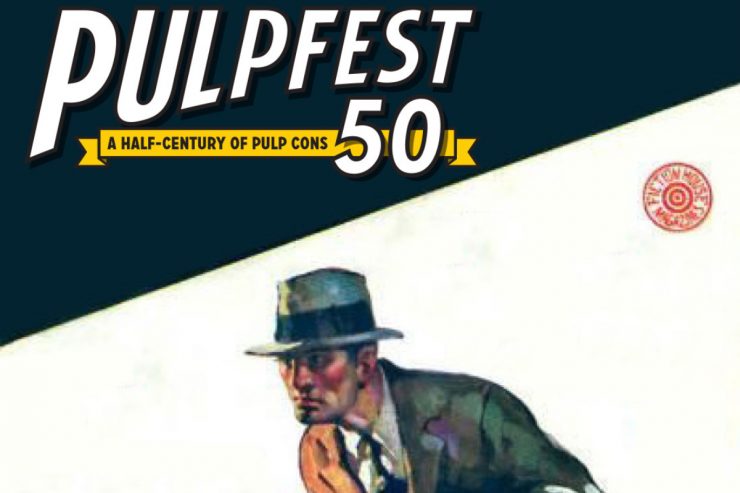Fifty years ago, there were no organized gatherings specifically geared toward pulp fiction and the magazines in which it appeared. That all changed when Ed Kessell, Earl Kussman, and Nils Hardin founded Pulpcon in 1972. This year we salute the fiftieth anniversary of that first pulp con — the convention now called PulpFest.
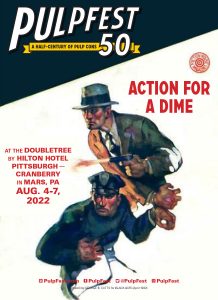 I first came to the pulps in the way most folks of my vintage likely did: through paperback reprints.
I first came to the pulps in the way most folks of my vintage likely did: through paperback reprints.
My maternal grandfather, a structural steelworker, lived and worked in New York City during the early going of the Great Depression, during Doc Savage’s and the pulp magazine industry’s heydays. My grandfather was an avid pulp magazine reader.
He consequently turned me onto Doc Savage about 1967 or ’68 when he gifted a still-elementary-school age me a Bantam paperback of The Land of Terror.
It was an autumn Saturday. The furnace kicked on for the first time. So PawPaw Sipe’s house smelled like charring dust — that first furnace-use-of-the-season smell. Because of that day, I still associate that fleeting fall scent with reading.
In my rare case, the Doc Bantam cover wasn’t the sell: the only hint of the recently passed James Bama’s painting genius was the small portraits of Doc and his five aides found on the back cover.
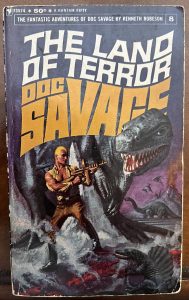
Always a precocious reader, one who skipped the Hardy Boys and the like, I read that Doc at a sitting and never looked back. That Doc paperback changed my life in many ways. It probably made me a writer.
That copy of the Bantam Land of Terror came from a little wooden, help-yourself-to-’em bookshelf stuffed with paperbacks and set up at the corner of the bar in Murph’s, a long-gone downtown watering hole in my hometown of Grove City, Ohio.
Pawpaw Sipe continued to scan that little bookshelf every day and grab me paperback pulp reprints.
From that moment on, my pulp magazine traction points — primarily and in order — were Doc Savage, The Avenger, and The Shadow.
A short time later, on Town Street in the legendary downtown Columbus bookstore run by the late Roy Willis, I picked up more Doc reprints. Eventually, I got my first three pulp magazines — Docs, of course — featuring the stories The Screaming Man, Mad Mesa, and The All-White Elf.
Flash forward: it’s the summer of 1980. There’s a profound wavering underway within me as a pulp-lit reader.
As an Ohio State University undergrad pursuing a dual major in English and journalism — while working part-time for a local weekly — I was increasingly drawn to more polished writers in my scant pleasure reading time: Ernest Hemingway, primarily, and on a more refined, pulpish trajectory, Raymond Chandler, Dashiell Hammett, and Cornell Woolrich.
Doc Savage, the last hero standing of Street & Smith’s big three, was still appearing in fresh paperback reissues. But The Man of Bronze was lately letting me down.
After the glory of The Purple Dragon (July 1978), there were some clunkers as Bantam had to delve into the decidedly not classic, 1940s run of Doc Savage pulps, including the interesting but ultimately disappointing rediscovered The Red Spider.
Flash forward, again: I angled for an early summer jump on my college studies. I get to OSU and have a few extra dollars. In an OSU bookstore, I pick up the first of the Bantam double Doc reprints. Doc and I reconnect a bit. I don’t read them all at the time, but I keep buying the doubles, followed by the Bantam omnibuses.
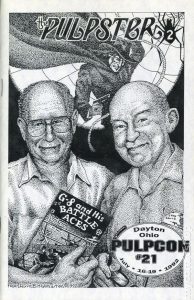 Why PulpFest? It’s now 1992. I hear about this pulp convention in Dayton. It’s somewhat over an hour’s drive from Columbus. It’s July 16 and my birthday, so to Dayton, I go.
Why PulpFest? It’s now 1992. I hear about this pulp convention in Dayton. It’s somewhat over an hour’s drive from Columbus. It’s July 16 and my birthday, so to Dayton, I go.
In that pre-internet year, at that Pulpcon, I got to see, at last, nearly every Doc Savage pulp cover for the first time.
I splurged and treated myself to three key Doc pulps (I believe sold to me by Bob Gorton): Fortress of Solitude, The Green Death, and The Devil Genghis. I also got issue #2 of The Pulpster and picked up a few fanzines, including a copy of Golden Perils and a few other gems.
Why PulpFest? That Dayton event 30 years ago rekindled my love for all things pulp.
Fatherhood and work stubbornly kept me from PulpFest when it was literally in my backyard in downtown Columbus.
In 2018, now an established author with a fairly deep run of pulpy novels of my own — featuring a Black Magazine author as the series’ protagonist — I returned to PulpFest in Pittsburgh as a fan and consumer.
I’ve since twice returned as a collector/fan, as well as an author/presenter, and last year, as a vendor.
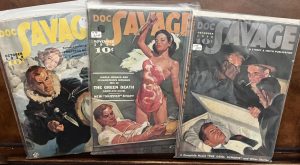
As a novelist, I’ve attended more than my share of mystery and crime fiction conventions. I’ve had my memberships in various trade organizations. But for some time, I haven’t been a card-carrying member of the Mystery Writers of America, nor have I attended a Bouchercon in many years. Too crowded, too much noise, and too many egos.
PulpFest is now my one-true multi-day convention as a writer/reader.
Why PulpFest? Because it’s intimate — just the right scale in terms of offerings, duration, and attendees. It’s so welcoming and collegial. Pulp enthusiasts are the best.
There are also generations of talented living authors cranking out great new pulp-style novels to be found at PulpFest — sagas to be explored and enjoyed.
Why PulpFest? Because it is, simply, a one-of-a-kind, and because it’s a blast from the storied past.
The author of the Edgar-nominated Hector Lassiter historical crime series, Craig McDonald is an award-winning novelist, journalist, and editor. His series chronicles the exploits of a fictional Black Mask author and his encounters with such notable figures as Ernest Hemingway, Orson Welles, Ian Fleming, and Lester Dent. In addition to his Edgar nomination, Craig was also a finalist for the Anthony, Gumshoe, and Crimespree Magazine Award for best first novel.
Given that Craig’s Hector Lassiter is a fictional Black Mask, it seems appropriate that our postcard image has been adapted by PulpFest advertising director William Lampkin from George Berthoy Cutts’ cover painting for the April 1932 issue of Black Aces.
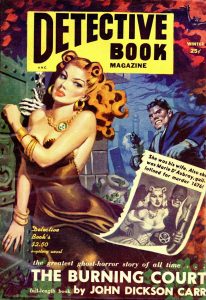 Although Fiction House published over 170 issues of various detective pulps — Detective Classics, Detective Book Magazine, Bull’s Eye Detective, and Two Complete Detective Books — they usually centered around a book-length novel, generally reprinted from another source. Black Aces was different in that it featured a selection of six or seven original short stories and novellas, largely featuring series characters. Unfortunately, with the unexpected passing of John B. “Jack” Kelly in April 1932, this Black Mask “wannabe” never really had a chance to hit its stride. It lasted a mere seven issues, running from January 1932 through July 1932. A couple of the magazine’s stories were later reprinted in 1939 in the final issue (of three) of Bull’s Eye Detective.
Although Fiction House published over 170 issues of various detective pulps — Detective Classics, Detective Book Magazine, Bull’s Eye Detective, and Two Complete Detective Books — they usually centered around a book-length novel, generally reprinted from another source. Black Aces was different in that it featured a selection of six or seven original short stories and novellas, largely featuring series characters. Unfortunately, with the unexpected passing of John B. “Jack” Kelly in April 1932, this Black Mask “wannabe” never really had a chance to hit its stride. It lasted a mere seven issues, running from January 1932 through July 1932. A couple of the magazine’s stories were later reprinted in 1939 in the final issue (of three) of Bull’s Eye Detective.
Of the publisher’s five detective pulps, Detective Book Magazine had the second-longest life. It ran for 65 issues. Pictured above is the magazine’s final number — dated Winter 1952 – 53 — with cover art by Allen Anderson. The longest-lived Fiction House detective pulp was Two Complete Detective Books. Debuting with its Winter 1939 number, it ran through Spring of 1954, a total of 76 issues. A reprint magazine, for the most part, it reprinted two complete and unabridged novels that had previously appeared in hardcover. The magazine cost 25¢ for most of its run.
Join pulpfest.com on June 29 when Jennifer DiGiacomo, former editor and publisher of the fanzine, The Savage Society of Bronze, answers the question, “Why PulpFest?”

